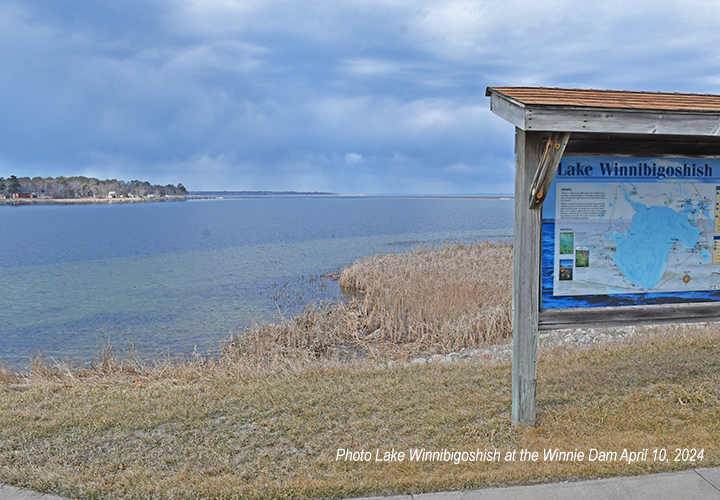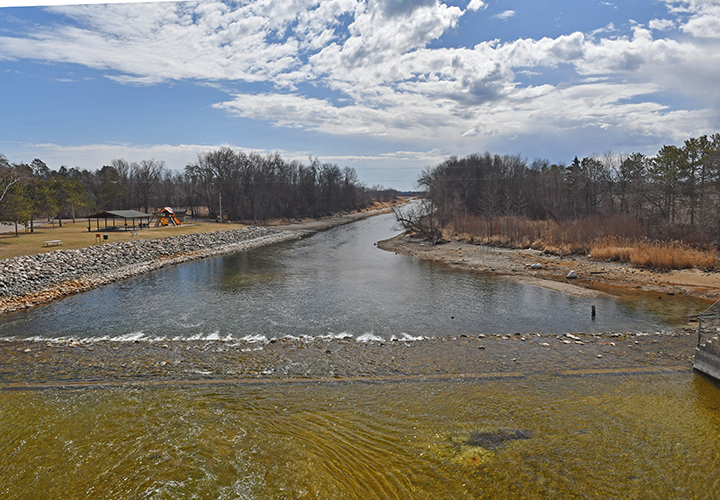
 Jeff Sundin April 12, 2024 "Walleye Spawing 2024 Prospects For Strong Year Class?"
Jeff Sundin April 12, 2024 "Walleye Spawing 2024 Prospects For Strong Year Class?"
 Questions about the 2024 walleye spawning season continue to show up in my in-box. Most folks simply want to know if the nets are set up at the MN DNR walleye egg take site at Little Cutfoot Sioux. Yes, they are, Grand Rapids Area Fisheries staff dropped them into the water yesterday, Thursday April 11, 2024. Whether or not there were many fish in the traps this morning is unknown, but I’ll have an update about that later today.
Questions about the 2024 walleye spawning season continue to show up in my in-box. Most folks simply want to know if the nets are set up at the MN DNR walleye egg take site at Little Cutfoot Sioux. Yes, they are, Grand Rapids Area Fisheries staff dropped them into the water yesterday, Thursday April 11, 2024. Whether or not there were many fish in the traps this morning is unknown, but I’ll have an update about that later today.
Q) Earlier this week, one question took a different track. Rand Olson wrote, “I’m not a pessimist, but I remember early ice outs in the past were years of poor reproduction or hatching, and I’m wondering if this will be another year like that? I hope you report on the DNR activity on an upcoming post.”
A) In recent years Rand, I’ve been given lots of help from fisheries folks aimed at helping me understand how walleyes spawn and the conditions that help encourage a strong year class. I’m struggling to recall anyone making a direct correlation between an early ice out date, and a poor year class of walleyes. I’m only speculating, but anecdotal accounts of that sort are likely influenced by other factors that happened to occur coincidentally.
The way I understand it, it is weather conditions that occur after the spawn which are most crucial to newly hatched walleye fry. An early spawn, followed by cold weather, could discourage algae production and result in a shortage of food that the tiny fry depends on for survival. So, even if walleyes were to spawn early but the subsequent weather remained warm, algae production would likely be strong, encouraging better survival during early spring and summer.
 After that, whether or not the lake will host a strong year class of walleyes depends heavily on growth rates during the first summer. The larger a fingerling grows during summer, the better its chance of survival over winter is. The ideal scenario for producing strong year classes of walleye would probably depend more on a strong summertime food supply than the raw number of walleye fry that are hatched.
After that, whether or not the lake will host a strong year class of walleyes depends heavily on growth rates during the first summer. The larger a fingerling grows during summer, the better its chance of survival over winter is. The ideal scenario for producing strong year classes of walleye would probably depend more on a strong summertime food supply than the raw number of walleye fry that are hatched.
Water levels during the spawning season have been talked about a lot recently too. There’s more to learn, but apparently, there is a correlation between high water during spring, and a strong year class of walleyes. For me, common sense would suggest that more shallow water would warm faster, and food production would be enhanced. Again, I’m only speculating about that.
What I do know is that right now, water levels on Lake Winnibigosh are lower than folks would like. I talked with Megan Severson at the US Army Corps of Engineers office at the Pokegama Dam on Thursday. Despite holding back on water flowing out to the Mississippi River, Winnie’s water level is about 5 inches below what the Corps of Engineers calls the mid-level band. As my accompanying photo of Tamarack Bay shows, the water is not “drought stage low”, but it is far from ideal.
Folks down river from any one of the Corps of Engineers operated dams are seeing very low water. That’s because they are all being held at minimum flow, according to Megan, there is no short-term plan to increase the flow through any of them. Everyone would like to see the water level rising, but it remains to be seen whether Mother Nature’s plan includes that.
From here on out, we'll be watching the spawning runs closely, so expect frequent updates. ![]() — Jeff Sundin 218-245-9858 or EMAIL
— Jeff Sundin 218-245-9858 or EMAIL
For more insight into walleye spawning, I’d suggest following this link to an article I wrote in 2019. In it, I gave a detailed recap of the process after visiting with the Brainerd Area fisheries staff at the Pine River operation. There are lots of photos and complete step-by-step descriptions of the entire operation. Read >> MN DNR Walleye Egg Take Pine River 2019
Most of Minnesota's walleye are not stocked, they are produced naturally. But there are a significant number of lakes that do depend on receiving stocked fish. Some of them are among my favorite walleye lakes in the state and some of your favorites may well depend on stocking too. So, I guess this is the time when I make my perennial pitch about buying a walleye stamp. I know that it's easy to say no to voluntarily paying the extra 5 bucks, but when you think about it, there is no reason for any walleye angler not to buy one. If you’ve thought about it before, but you’re on the fence, let me take one swing at convincing you to buy a walleye stamp this year. Follow this link to learn why I think it's a good idea. Learn More >> Minnesota’s Voluntary Walleye Stamp
More Recent Fishing Reports
L.O.W 04-09 • Sundin 04-08 • MN Record Fish • Fisheries Plans 02-08 • Perch Report 1-29 • Barotrauma Study 1-25-24 • Fish Consumption • Forward Sonar • Panfish Workgroup • Follow on Facebook
Jeff Sundin is a full time fishing guide, outdoor writer and photographer. Learn about guided fishing trips and more, click >> More About Jeff Sundin.
Current Fishing Reports • Guided Fishing Trips • Current Video • Fishing Articles • Fishing Links • Contact
The Fishrapper, Fishing Blue Books, LLC • 715 Byington Ave • La Prairie, MN 55744 • 218-245-9858
copyright©2024 Fishing Blue Books, LLC All Rights Reserved - last revised 04/17/2024